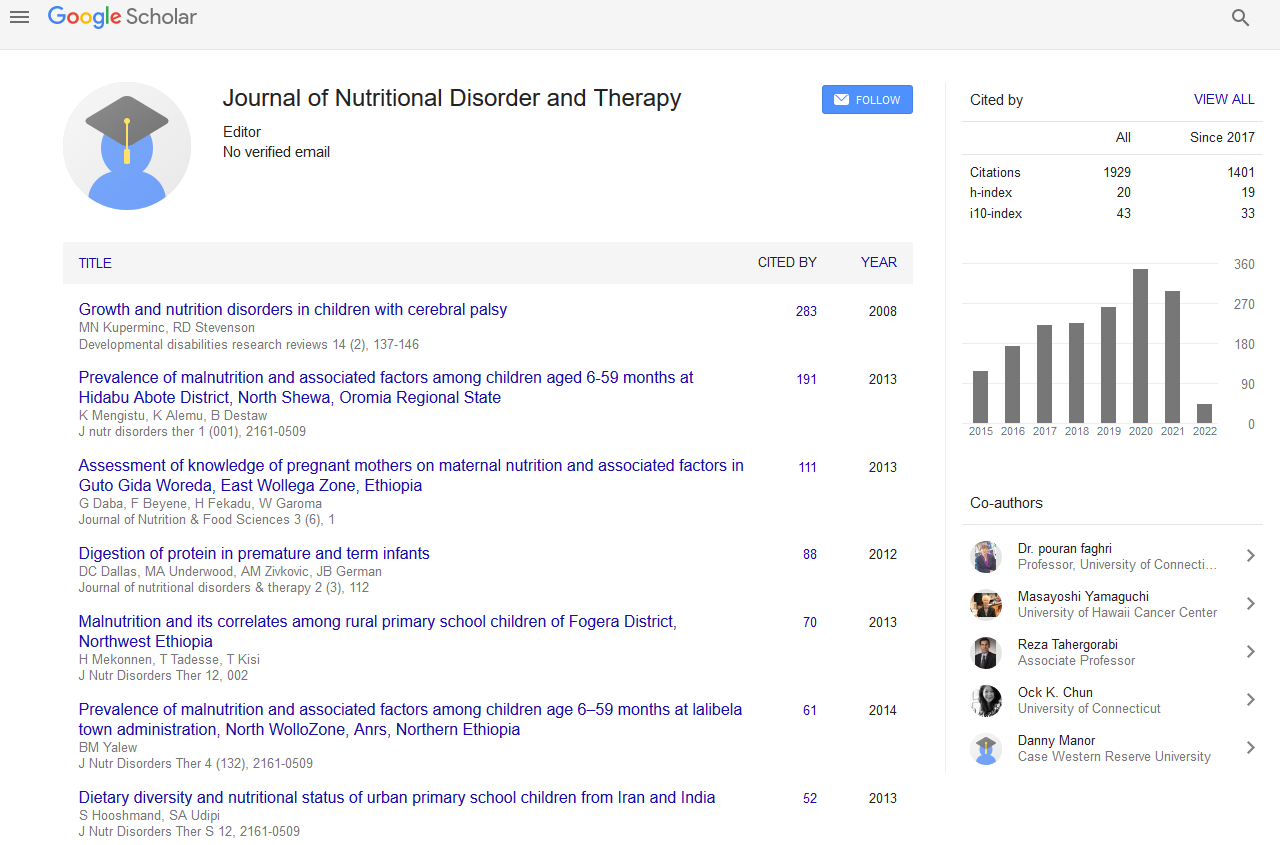Indexed In
- Open J Gate
- Genamics JournalSeek
- Academic Keys
- JournalTOCs
- Ulrich's Periodicals Directory
- RefSeek
- Hamdard University
- EBSCO A-Z
- OCLC- WorldCat
- Publons
- Geneva Foundation for Medical Education and Research
- Euro Pub
Useful Links
Share This Page
Journal Flyer

Open Access Journals
- Agri and Aquaculture
- Biochemistry
- Bioinformatics & Systems Biology
- Business & Management
- Chemistry
- Clinical Sciences
- Engineering
- Food & Nutrition
- General Science
- Genetics & Molecular Biology
- Immunology & Microbiology
- Medical Sciences
- Neuroscience & Psychology
- Nursing & Health Care
- Pharmaceutical Sciences
Synergistic efficacy of combined whole grape seed flour and kefir-derived lactic acid bacteria reduces high-fat(hf) induced obesity
JOINT EVENT: 13th International Congress on Advances in Natural Medicines Nutraceuticals & Neurocognition & 14th International Conference on Clinical Nutrition
July 27-29, 2017 Rome, Italy
Hyunsook Kim, Jihye Kwan, Yun-ju Cho, Dong-Hyun Kim, Hong-seok Kim and Kun-Ho Seo
Hanyang University, South Korea
Konkuk University, South Korea
Scientific Tracks Abstracts: J Nutr Disorders Ther
Abstract:
The objective of this study was to determine, if combination of prebiotics (whole wine grape seed flour) and probiotics (kefir-derived lactic acid bacteria, LAB) could induce synergistic synbiotic anti-obesity effects on obese mice. Grape seeds are high in polyphenols, including flavonols, particularly proanthocyanidins. Mice were fed either with a high fat (HF, 47% fat calorie) or chow diet for five weeks. Mice on the HF diet that were greater in weight than mice fed with chow were considered diet induced obese (DIO). The DIO mice were fed with the HF or HF diet supplemented with 5% or 10% Chardonnay grape seed (ChrSd) flour in the combination of kefir-derived lactic acid bacteria for 8 weeks. Continued feeding of the HF diet supplemented with ChrSd and LAB resulted in significant decrease in weight gain, liver weight, adipose weight, and plasma and hepatic lipid levels. ChrSd and LAB significantly improved insulin sensitivity. These changes were more profound by combination of ChrSd and LAB. Possible mechanism may be related to enhanced bioavailability of proanthocyanidins by action of probiotic lactic acid bacteria in the intestine. These results suggest that combined ingredients of ChrSd and LAB are effective to reduce HF-induced obesity and insulin resistance. These synergistic effects could solve a problem that a large amount of prebiotics or probiotics intake requires to exert similar health beneficial effects.
Biography :
Hyunsook Kim is an expert in the development of new functional natural food ingredients as an effective means of managing weight and decreasing risk factors for obesity and related metabolic diseases. She adds value in byproduct waste from fruit and vegetable processing and also potentiates their effectiveness after combined with probiotic lactic acid from fermented foods. Using high-throughput techniques including nutrigenomics, metabolomics, metagenomics, and biochemical analysis, she is trying to determine novel pathways and bioactive components involved in intestinal microbiota, innate immunity, inflammation, intestinal permeability, lipid metabolism, gut-derived hormones, adipose-derived hormones that improve obesity and related metabolic disease.


